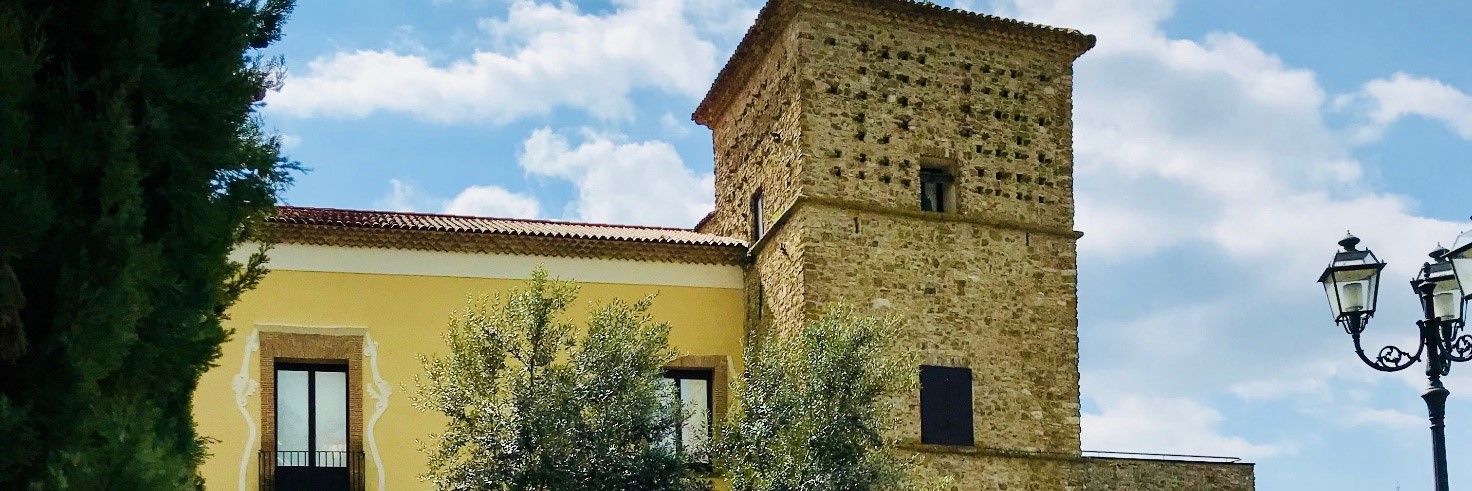 |
Comune di Torchiara: "il borgo delle antiche Torri" Il Comune di Torchiara (1.845 abitanti su una superficie di 8 kmq) è ubicato in una posizione estremamente felice, alle porte del Parco Nazionale del Cilento, Vallo di Diano e Alburni, su una ridente collina (360 m. s.l.m.) che fa da spartiacque tra la valle del fiume Testene e quella dell’Alento. Confina con i comuni di Agropoli, Laureana Cilento, Lustra, Prignano Cilento e Rutino. Oggi, Torchiara, è un centro agricolo che ha, però, sviluppato rapidamente le attività legate al commercio ed al turismo. La produzione agricola è di alta qualità: olio d’oliva in primo luogo, vini, fichi, salumi e latticini. Alcuni storici sostengono che la denominazione “Torchiara” derivi probabilmente dal latino “Turris Clara” o “Turribus Clara”, cioè “L’illustre tra le torri” o “famosa per le sue torri”: ciò per evidenziare le numerose torri (parte della cinta muraria medievale) che circondavano il borgo antico e difendevano e decoravano le dimore di alcune famiglie gentilizie. L’origine del borgo sembra essere legata all’occupazione della vicina Agropoli da parte dei saraceni e dei successivi episodi di pirateria e saccheggi, tra l’870 ed il 911, che costrinsero numerosi cittadini a rifugiarsi sulle colline circostanti.
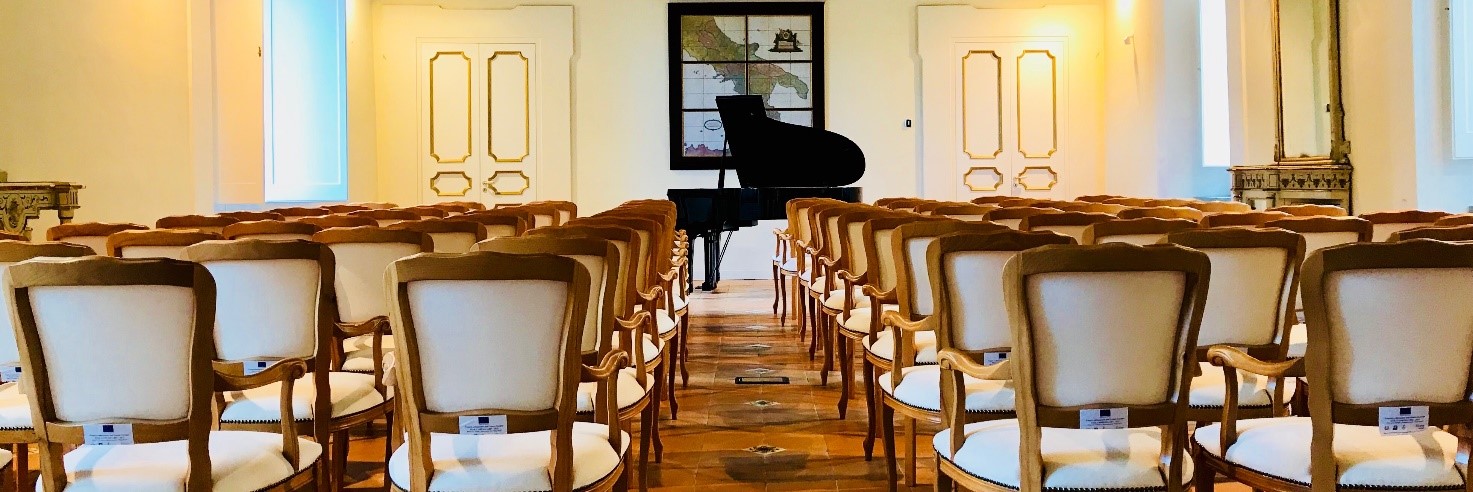 |
The Town of Torchiara (1,845 inhabitants on an 8 sq km area) is extremely delightfully located, just outside the National Park of Cilento, Vallo di Diano and Alburni, on a pleasant hill (360 meters above sea level) which is the boundary between the valley of the river and the Testene dell’Alento. It borders the municipalities of Agropoli, Laureana Cilento, Lustra, Prignano Cilento and Rutino.Today, Torchiara, is an agricultural center which, however, has rapidly developed ventures related to commerce and tourism. Torchiara also boasts rich agricultural production including: olive oil, wine, figs, meats and dairy products of first class quality. Some historians argue that the name “Torchiara” derived from the Latin “Turris Clara” or “Turribus Clara”, that is to say “The distinction between the towers” or “famous for its towers”, which highlight the many towers (part of medieval wall) surrounding the old village and defended and decorated the homes of some noble families. The origin of the village seems to be linked to employment in nearby Agropoli by the Saracens and subsequent incidents of piracy and looting, between 870 and the 911, which forced many people to seek refuge in the surrounding hills.
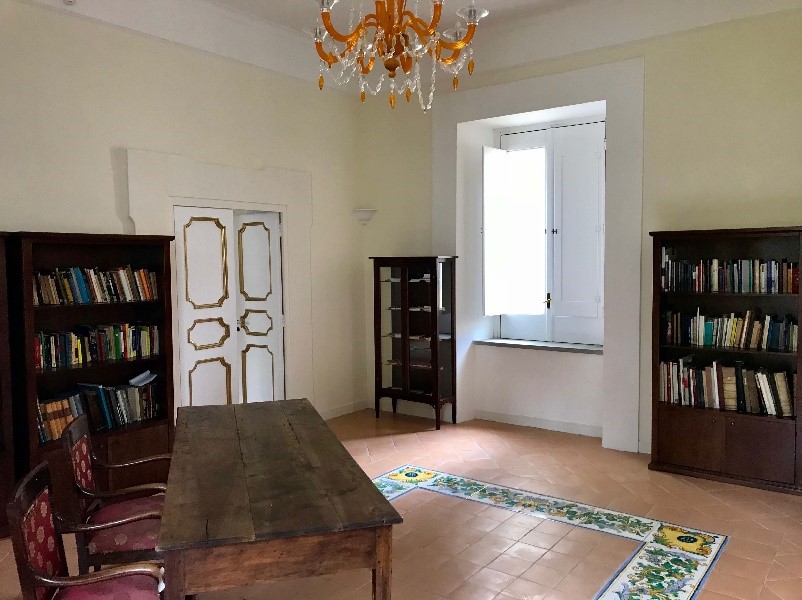 |
Palazzo Baronale De Conciliis Emblema del potere feudale del borgo, situato secondo le esigenze di sicurezza a metà strada tra Torchiara e la frazione di Copersito. Il maniero, risalente al XVI secolo, costituisce un interessante esempio di palazzo feudale cilentano, con planimetria quadrangolare, corte interna e due torri angolari di altezza e forma diverse: una quadrata ed una circolare (quest’ultima un tempo adibita a prigione). Il prospetto principale ha un disegno molto semplice e lineare, scandito dal ritmo regolare di poche aperture; al piano terra, nel mezzo, è sistemato il portale d’ingresso, con arco a tutto sesto, realizzato con listelli in laterizio; ai lati, simmetricamente, sono disposte due finestre quadrangolari. Al piano nobile sono tre aperture (al centro è un balconcino) con mensole in pietra ed infissi lignei; sia le finestre che il balcone sono contornati all’esterno da eleganti decorazioni e fregi in stucco di gusto barocco, con motivi geometrici, volute, riccioli, foglie e tralci. Sul lato è la grande torre di difesa. L’ultimo livello, adibito successivamente a colombaia, presenta i fori e gli appoggi per i volatili; in sommità è il ricco cornicione lavorato che chiude la facciata, coperta con tetto a falde. All’interno del palazzo, nel grande salone centrale di rappresentanza, si segnala il prezioso soffitto ligneo con travi a vista, finemente intarsiato e decorato con motivi floreali e geometrici; nella parte superiore dei muri si nota una larga fascia dipinta in cui sono rappresentati, tra putti e fiori, la corona e lo stemma gentilizio della famiglia De Conciliis. Nel 1980 il palazzo fu donato dal barone Nicola De Conciliis al Comune di Torchiara che, dopo averlo restaurato, ha destinato l’immobile ad attività sociali, museali e culturali.
It is the emblem of the feudal power of the village, safely located halfway between Torchiara and the fraction of Copersito.The manor, dating back to the sixteenth century, is an interesting example of feudal palace Cilento, with rectangular floor plan, interior courtyard and two angular towers in height and different shape: two angular towers of different height and shape: a square and a circular one (the circular one was once used as a prison).Marked by the regular few openings; on the ground floor, in the middle is the portal entrance with a round arch, built with symmetrical bricks strips; at the sides, and two quadrangular windows. On the main floor are three openings (in the middle is a small balcony) with stone shelves and wooden window frames; both windows and the balconies are surrounded on the outside by elegant decorations and ornaments of plaster in baroque style, with geometric patterns, swirls, curls, leaves and branches. On the side is the large defence tower. The final level, later used as a dovecote, presents the holes and the supports for the birds; at the top, is the rich cornice work which closes the facade, covered with flaky roof. Within the palace, in the center of the representation hall, we see the precious ceiling with exposed wooden beams, beautifully carved and decorated with floral and geometric motifs; in the upper part of the walls there is a large painted band in which are represented, among angels and flowers, the crown and the emblem of the noble family De Conciliis. In 1980 the building was donated by Baron De Nicola Conciliis to the City of Torchiara that, after having restored the property it’s been used for social events, museums and cultural activities.
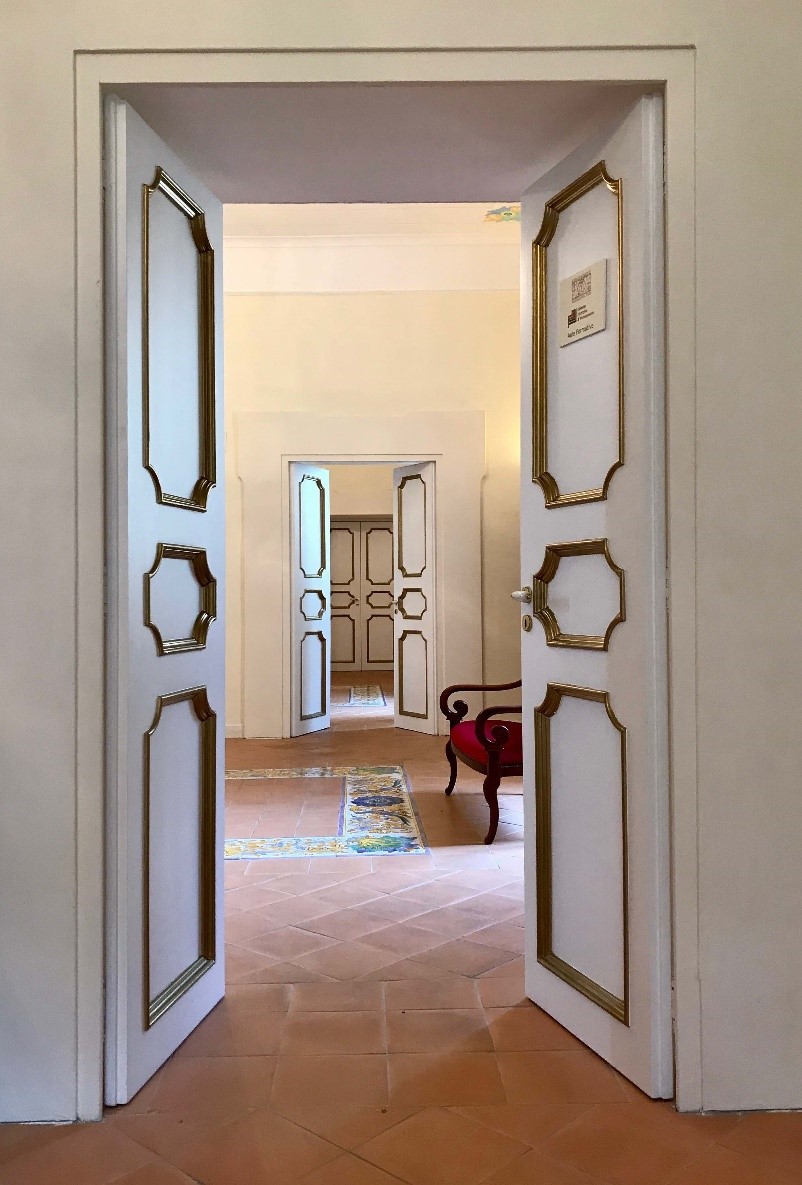 |
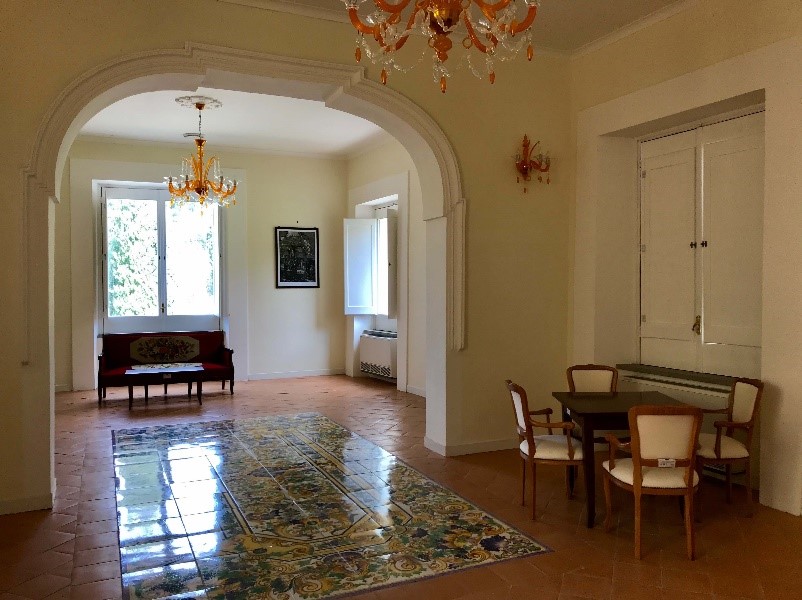 |
